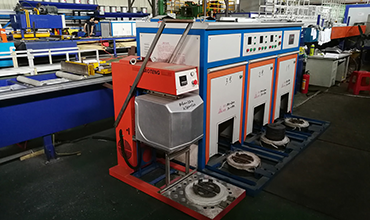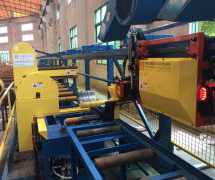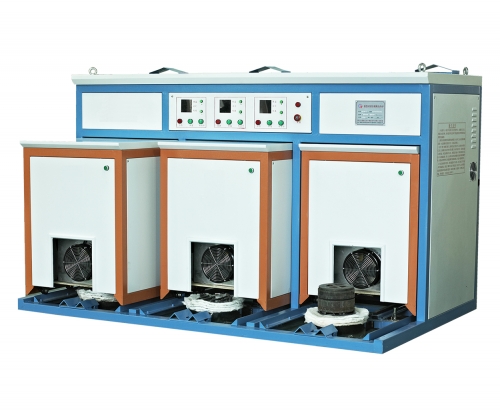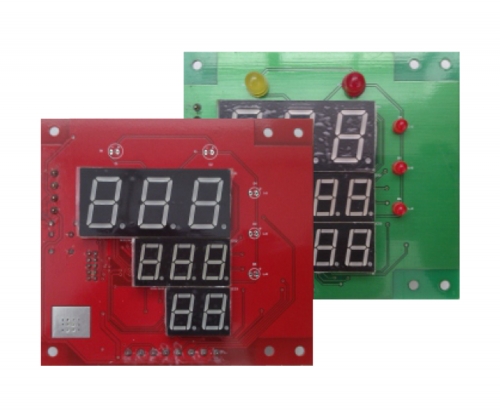Overview of mold heating methods
One, the introduction
Mold temperature has a great influence on the quality and productivity of plastic products. Mould temperature and its fluctuation have influence on shrinkage, dimension stability, mechanical properties, deformation, stress cracking and surface quality. Mold temperature is too low, melt fluidity is poor, product outline is not clear, or even dissatisfied with the cavity or line into the weld mark, product surface gloss, defects. Therefore, mold temperature is critical for plastic molding and product quality. The way of heat input is the heating of the heating device and the heat brought in by the plastic melt, and the way of heat output is natural heat dissipation and outward heat conduction away. In the molding process, to keep the mold temperature stable, should maintain the heat input and heat output balance. This paper describes the mold heating mode.
Ii. Mold heating method
Mold heating methods are flame heating, electric heating, infrared heating, steam heating. The cooling method is to use the cooling medium in the cooling pipe to conduct the heat away.
(1) flame heating
Flame heating is a method of instantaneous flame heating mould using gas fuel. At the moment of mould closing, the surface of mould cavity is heated by flame, and then the mould is closed for injection.
The surface of mold cavity is heated by flame, the heating speed is fast, and compressed air is used to cool the plastic parts quickly, which is beneficial to improve the surface quality of the plastic parts. However, it is necessary to open fuel pipe holes in the mold. The mold structure is relatively complex, and it is not suitable for plastic parts with complex shapes. Due to the use of gas fuel, there are certain safety risks, and the temperature of the cavity surface is not easy to control, this heating method is used less.
(2) steam heating
Steam direct heating mold cavity technology is the high temperature steam directly into the complex cavity, the mold surface to achieve the required temperature, and then through the high temperature dry air, blown out of the mold cavity residual condensed water, then pouring, pressure retaining, cooling, mold, complete an injection cycle. This method only heats the thickness of the cavity surface 1 ~ 2 turn, which can concentrate the heat and evenly act on the cavity surface, greatly shorten the heating and cooling time, and improve the utilization rate of heat energy. Due to the front and rear die surface are heated, melt material front temperature is high, melt material fluidity enhancement, two die surface melt material front speed is basically the same, die surface temperature uniform, can completely eliminate the plastic surface weld mark, warping, flow mark, surface shrinkage and other defects, and achieve a very high surface roughness level.
(3) infrared heating
Infrared heating USES infrared heating head or infrared heating tube. The working face of the heating plate of the infrared heating mould system is plated with a film, which is used to reflect the infrared ray. At the same time, the infrared thermometer and heater are fixed on the heating plate, and the matching mold cavity is coated with a film absorbing infrared ray. The working process of the system is similar to that of the induction heating die system. Compared with the induction heating mold system, the efficiency of infrared heating mold is lower, and the heating plate and mold cavity surface needs to be coated with a film to reflect and absorb infrared, increasing the cost of the system device.
(4) electric heating
Electric heating is the method of heating the mould with electric heating elements. In the process of injection molding, the electric heating rod of the cavity and core rapidly heats the template to a temperature close to or higher than the thermal deformation temperature of the plastic material, and ensures that the corresponding temperature is maintained in the process of injection. After the injection, the cooling water cools the mold cavity and core rapidly. After the mold temperature cools to the set temperature range, the mold is opened and the plastic parts are taken out.
The injection mold is heated by electric heating elements without the need of external supporting heat source, which reduces the cost, prevents the cooling water in the mold from absorbing too much heat and slows down the heating speed of the mold, prevents the high temperature and high pressure caused by the evaporation of cooling water and improves the safety of the equipment. The disadvantage is that the heating element is embedded in the mold, which increases the complexity of the mold structure, and it is not suitable to shape complex plastic parts.
(5) electric induction heating
Electric induction heating technology is based on the principle of electromagnetic induction, alternating current is passed on the induction coil, the eddy current is generated in the mold, the heat is generated to heat up the mold, coupled with low temperature rapid cooling equipment, to achieve rapid heating of the mold. The electromagnetic induction heating mould method is characterized by integrating the electromagnetic inductor into the mould and matching with the shape of the parts. Induction phenomenon occurs in the mold, the mold surface does not form a current loop. Some materials, such as carbon fiber reinforced plastics, are allowed to conduct heat into shape. Uniform heating occurs on the surface of the mold, reducing heating time and energy consumption.
At present, the induction heating of the mould can be divided into the induction heating outside the mould and the induction heating inside the mould. External induction heating requires an external auxiliary mechanism to place the coil on the surface of the cavity. When the coil is heated to the set temperature, it is removed from the mold for mold closing and injection. The induction heating in the mold is to place the induction coil in the mold, which can be used to heat the cavity surface when the mold is closed. The temperature of the mold can be adjusted accurately. Because the induction heating element will heat the part of the mold nearby, it must be well insulated or leave a large gap.
Current methods for mold induction heating:
(1) mechanical hand auxiliary induction heating: strong versatility, heating with the mold cavity only need to replace the coil. However, it cannot be heated after die closing, and the implementation mechanism is also complicated.
(2) electric induction heating of the mold core: heating in the mold makes the temperature uniformity of the mold cavity good. But insulation is harder.
(3) induction heating tube heating: the device can be closed after heating, heating tube installation and use is more convenient. But the temperature uniformity is not very good when heating.
(4) coil induction heating inside the mold: the device has good temperature uniformity in the cavity and high temperature control accuracy. However, coil mounting holes and cooling channels need to be processed in the template, so the structure is relatively complex.
(5) coil induction heating in mold core: this device is easy to install, has good temperature uniformity and high temperature control accuracy. However, the template structure is complex and difficult to manufacture.
Three, the conclusion
Mold temperature is one of the important process parameters affecting plastic parts, the application of mold heating technology can not only effectively eliminate the quality defects of plastic parts, to improve the surface quality of plastic parts has a very significant effect, but also can reduce production costs, shorten the production cycle of plastic parts, improve production efficiency.
There are many related technologies of mold heating system, and with the development of industrial technology, the trend of integration of various technologies will be more and more obvious, and the application prospect of mold heating system will be more and more obvious.

The address of this article:http://liangjialin.cn/en/news/362.html
Key word:模具爐,模具加熱爐,節(jié)能模具爐
Recently browse:
Related products:
Related news:
- Comparison of electromagnetic heater and traditional heating method
- How much can transform electromagnetism heater save after all?
- What are the key selection points when purchasing medium frequency heating furnace equipment?
- Industrial applications of electromagnetic heaters
- Where can the electromagnetic heater be applied
- What should I pay attention to when installing the electromagnetic heater
- How should electromagnetic heating heater maintain?
- How to nurse the daily of electromagnetism heater?
- Advantages of household electromagnetic heaters
- How to choose the power of electromagnetic heater?

















